Describe the Cell Wall of Bacteria
This acid is a polyol phosphate polymer with a powerful charge. Types of cell wall 1.

Cell Wall Structures Of Gram Positive And Gram Negative Bacteria And Download Scientific Diagram
Plasma membrane lies inside the cell wall and is separated from the latter by a periplasmic space.

. 3 rows Another fascinating feature of bacteria is their protective cell wall which is made up of a. The cell wall functions as a surface organelle that allows gram positive pathogens to interact with th. The cell wall peptidoglycan layer is flexible but still rigid enough to maintain its shape.
The cell wall also includes an outer membrane with lipopolysaccharide LPS molecules attached. Its rigid structure gives the bacterial cell shape surrounds the plasma membrane and provides prokaryotes with protection from the environment. This membrane can be invaginated to form simple internal.
Thus a bacterial cell wall is glycopeptide which is also known as peptidoglycan. Bacterial Cell Wall Peptidoglycan murein rigid structure that lies just outside the cell plasma membrane two types based on Gram stain Gram-positive. Gram positive bacteria have cell walls composed of thick layers of peptidoglycan.
Amount and location of the peptidoglycan molecule in the prokaryotic cell wall determines whether a bacterium is Gram-positive or Gram-negative. Gram-negative cell walls thin skinned. It give shaperigidity and support to the cell.
Let us start with peptidoglycan since it is an ingredient that both bacterial cell walls. Lack a cell wall soft. The cell walls of gram positive bacteria are composed predominantly of peptidoglycan.
They are antigenic and are not seen in gram-negative bacteria. The cell wall is an important characteristic of the bacterial cell. Stain pink or red.
However it has a thick murein layer. Lipoteichoic and teichoic acids are then interwoven through the peptidoglycan layers. Bacteria possess cell wall peptidoglycans which confer the characteristic cell shape and provide the cell with mechanical protection.
Teichoic acids in these bacteria are covalently associated with peptidoglycan. This cell wall contains a hydrophobic waxy lipid known as mycolic acid which occupies the 60 of the cell wall. Gram-Positive bacteria Gram-Negative bacteria Cell Wall Their cell wall is smooth and single-layered They have a wavy and double-layered cell-wall Cell Wall thickness The thickness of the cell wall is 20 to 80 nanometres The thickness of the cell wall is 8 to 10 nanometres Peptidoglycan Layer It is a thick layer It is a thin layer Teichoic acids.
Step-by-step explanation A gram-positive cell consists of numerous interconnection of layers of peptidoglycan. Cell walls of gram-positive bacteria lack an outer membrane. Expert Answer 100 1 rating.
In not more than three pages describe the bacteria cell wall hence differentiate between the gram positive and the gram negative bacteria with not less than five examples and the specific disease each of them causes. It does not have an external membrane. Gram Positive Cell walls.
Gram positive cells stain purple when subjected to a Gram stain procedure. Gram Positive and gram negative. Cell wall is composed of two polymers one consisting of saccharide subunits and the other consisting of amino acid subunits.
Well if we consider a cross section of the cell wall of an acid fast bacterium it can be easily understand. Bacterial cells almost always are surrounded by a chemically complex cell wall. Acid fast stain or carbolfuchsin binds only to bacteria that have a waxy cell wall.
A bacterial cell wall is a rigid additional covering external to the cell membrane that provides extra strength to the cell. Thin peptidoglycan and outer membrane. Gram Negative Cell Walls.
Peptidoglycans are unique to prokaryotic organisms and consist of a glycan backbone of muramic acid and glucosamine both N-acetylated and peptide chains highly cross-linked with. Alternatively Gram negative bacteria stain red which is attributed to a thinner peptidoglycan wall which does not retain the crystal violet during the decoloring process. Cell wall is an important structure of a bacteria.
1The cell wall envelope of gram positive bacteria is a macromolecular exoskeletal organelle that is assembled and turned over at particular sites. Based on the characteristics of the cell wall the bacterial cells are classified into Gram Positive and Gram Negative primarily based on the classical staining reaction called Gram Staining. Gram-positive bacteria including Staphylococcus aureus surround themselves with a thick cell wall that is essential to cell survival and growth and is a major target of antibiotics Penicillin and vancomycin are among the antibiotics that interfere with synthesis of the bacterial cell wall yet patients are succumbing to infections caused by bacteria that.
There are four distinct groups of bacteria based on the differences in cell wall characteristics. On the basis of cell wall composition bacteria are classified into two major group ie. Identify the four groups and describe their cell wall characteristics.
The cytoplasmic membrane is attached to the cell wall through the use of proteins and lipids A cell wall is a requirement for all living bacteria. Peptidoglycan Lipid Teichoic acid. Cell Walls Structure of Peptidoglycan.
Gram-positive cell walls thick strong. The composition of the bacterial cell wall is. Some wall components can be lipids proteins and.
Peptidoglycan murein is the principal component of the bacterial cell wall and it is responsible for the shape and extreme tough nature of the cell wall. Gram negative bacteria have cell walls with a thin layer of peptidoglycan. The saccharide component of the cell wall has alternating repeating units of two amino sugars related to glucose.
Peptidoglycan stops osmotic lysis in the hypotonic setting in which the bacteria live. Namee four divisons ending in -cutes and describe characteristics. Gram positive cell wall Cell wall composition of gram positive bacteria.
Gram positive bacteria stain violet due to the presence of a thick layer of peptidoglycan in their cell walls which retains the crystal violet these cells are stained with.
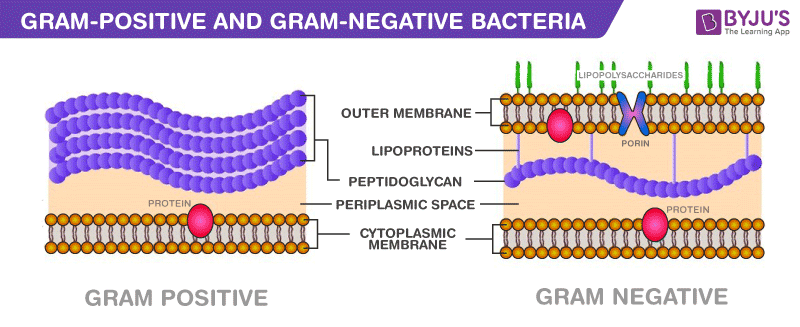
Major Difference Between Gram Positive And Gram Negative Bacteria
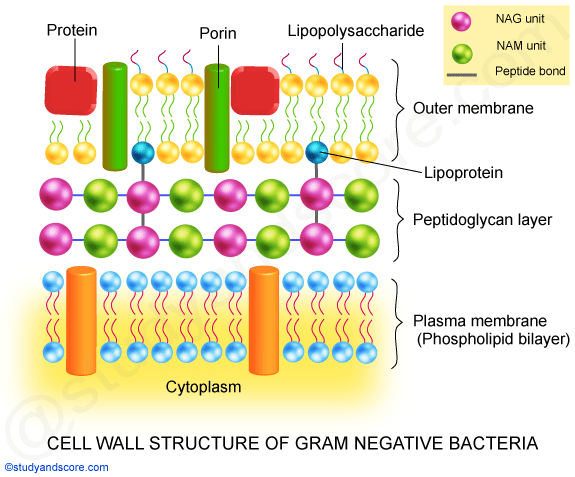
Cell Wall Of Bacteria Structure Functions Gram Positive And Gram Negative Cell Walls Study Score

Bacterial Cell Wall Structure Composition And Types Online Biology Notes
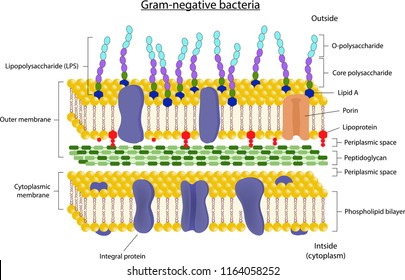
Cell Wall Images Stock Photos Vectors Shutterstock
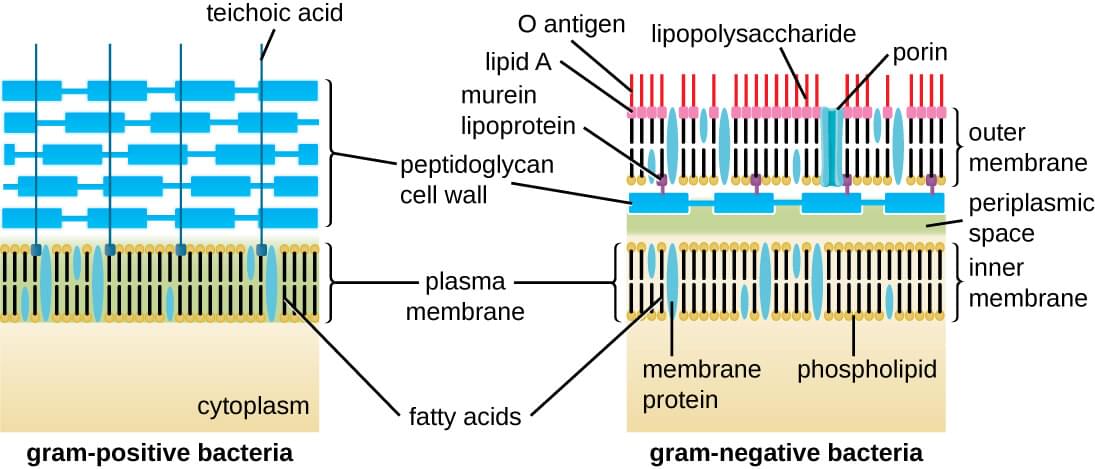
Bacterial Cell Wall Targets Identification Creative Biolabs
Bacterial Cell Walls Structure Function Types Video Lesson Transcript Study Com
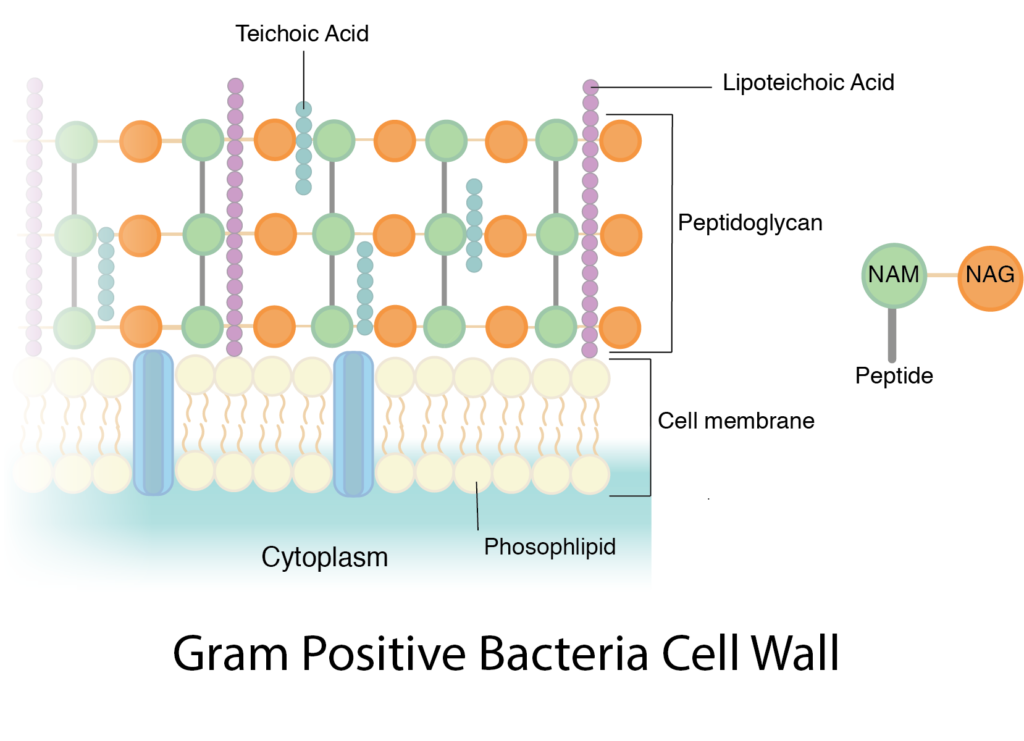
Bacteria Cell Walls General Microbiology

4 4a The Cell Wall Of Bacteria Biology Libretexts
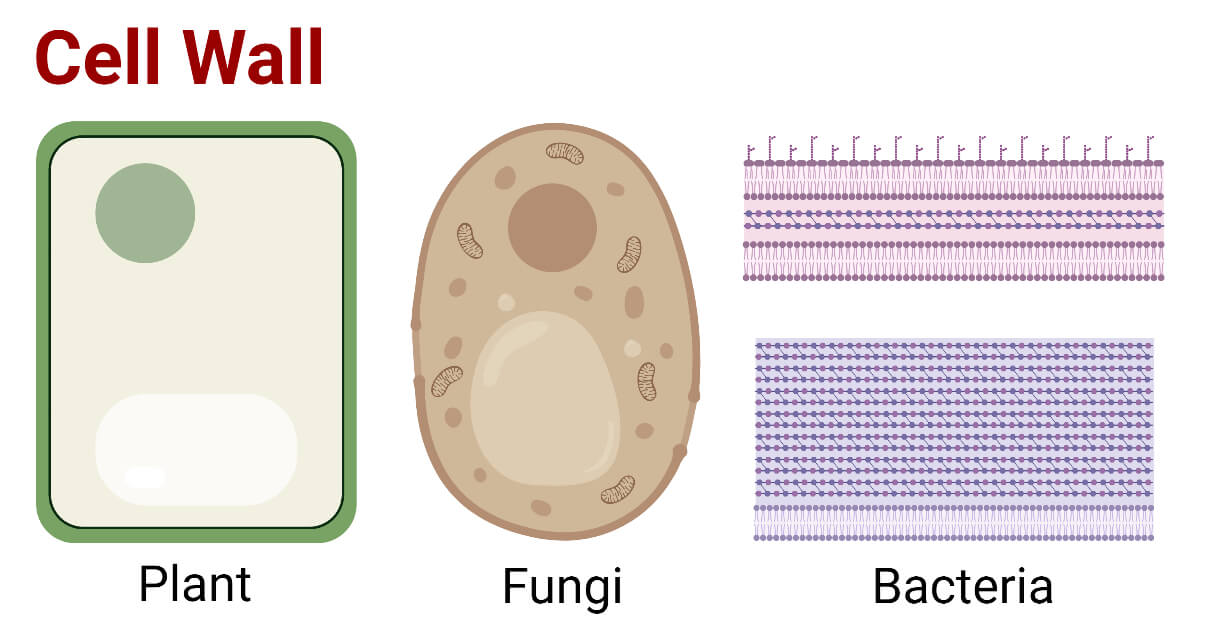
Cell Wall Plant Fungal Bacterial Structure And Functions

Microbiology Of Bacterial Cell Wall Youtube

Bacterial Cell Wall Structure Composition And Types Online Biology Notes

What Is The Structure And Composition Of A Bacterial Cell Wall Quora
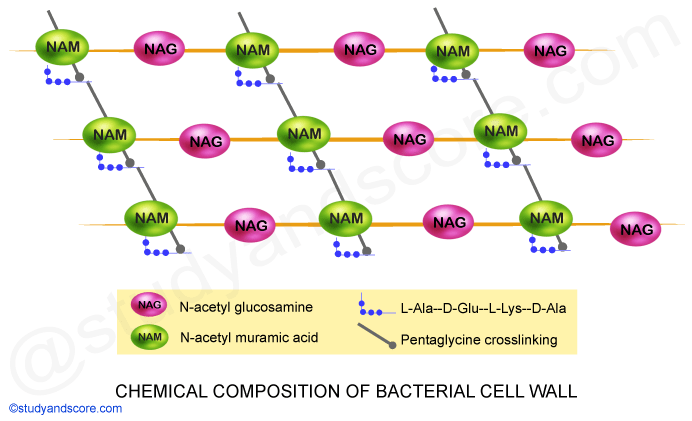
Cell Wall Of Bacteria Structure Functions Gram Positive And Gram Negative Cell Walls Study Score
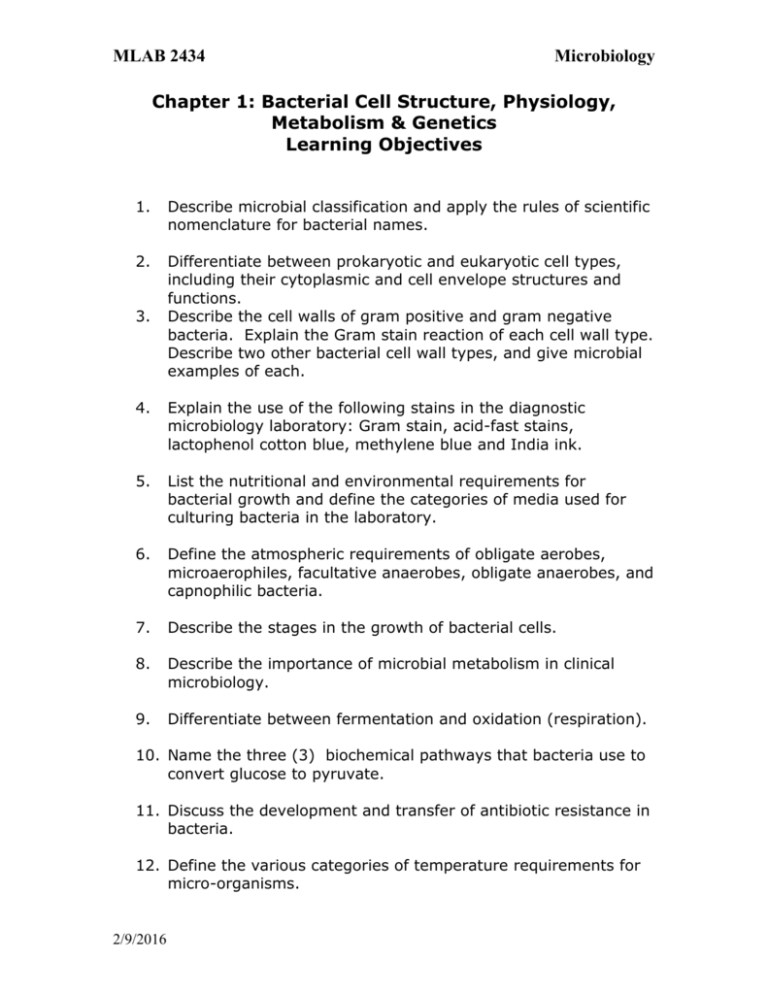
Unit 1 Bacterial Cell Structure Physiology Metabolism Genetics

What Is The Structure And Composition Of A Bacterial Cell Wall Quora

Cell Wall Structures Of Gram Positive And Gram Negative Bacteria And Download Scientific Diagram

Do Bacteria Have A Cell Membrane Quora
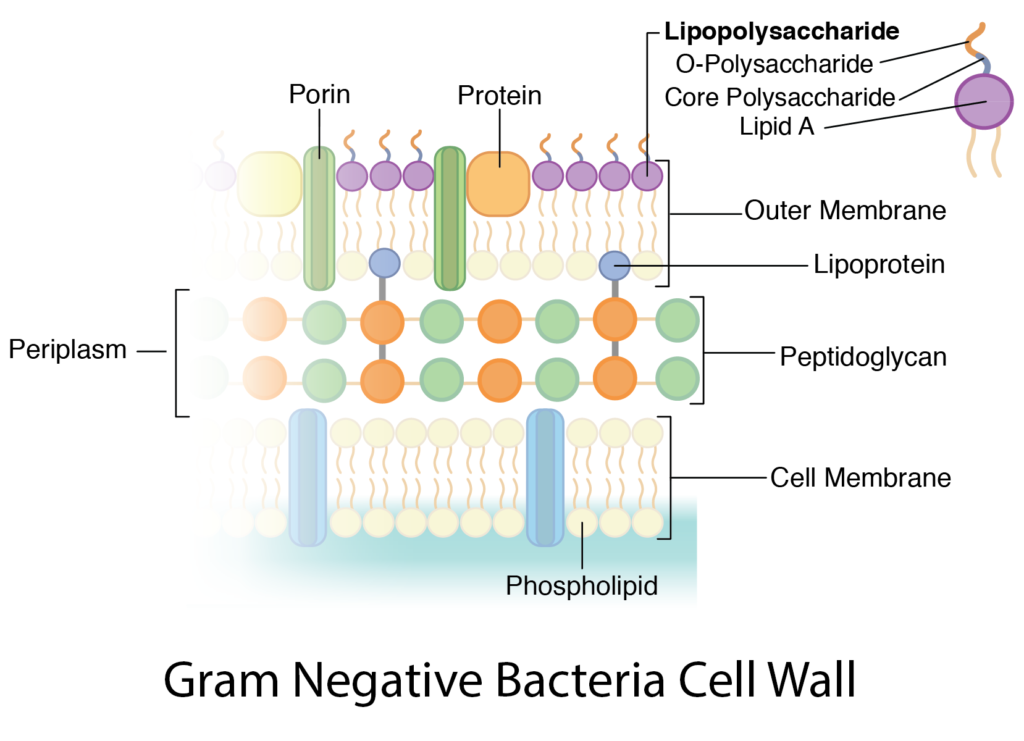
Bacterial Cell Wall Structure Composition And Types Online Biology Notes
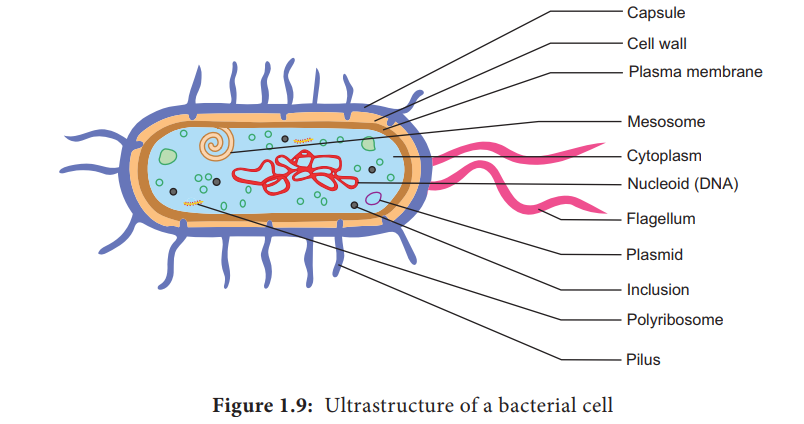
Comments
Post a Comment